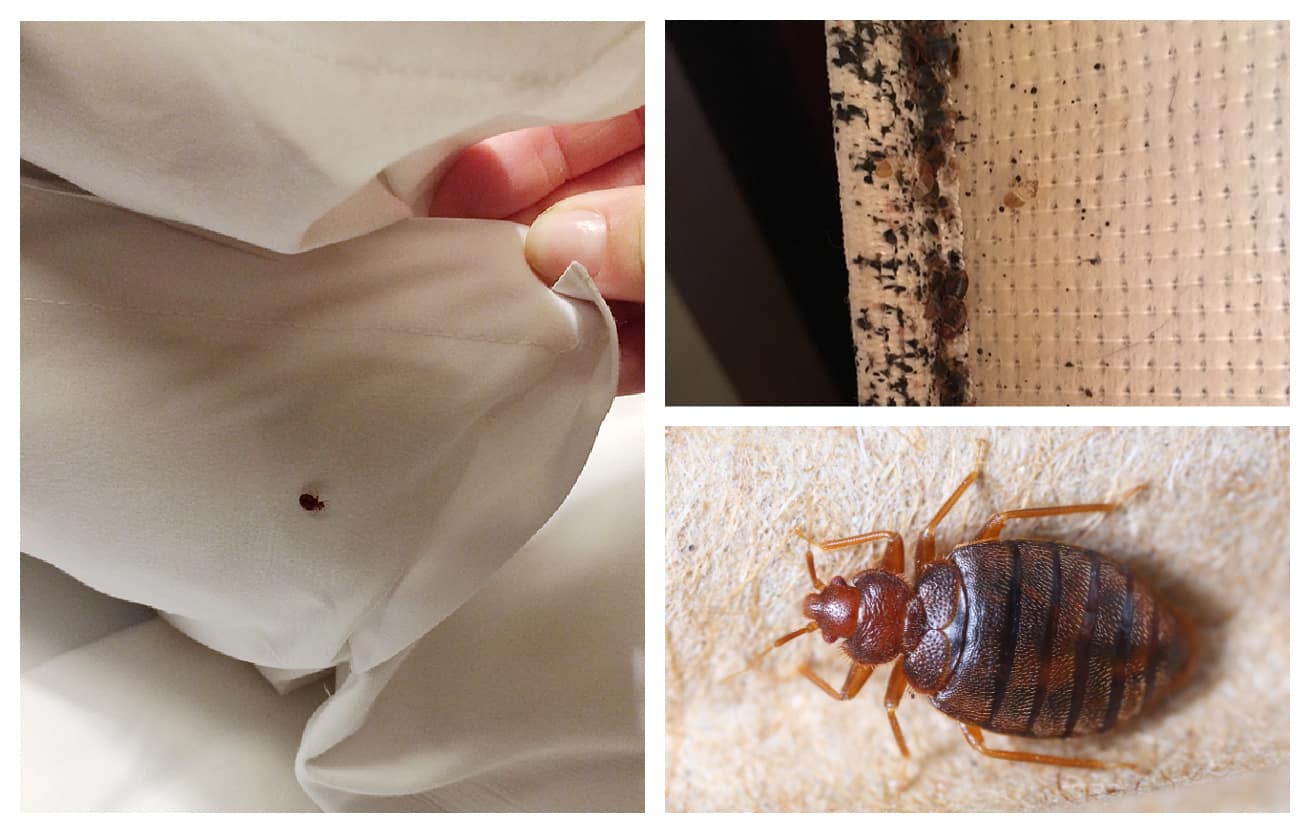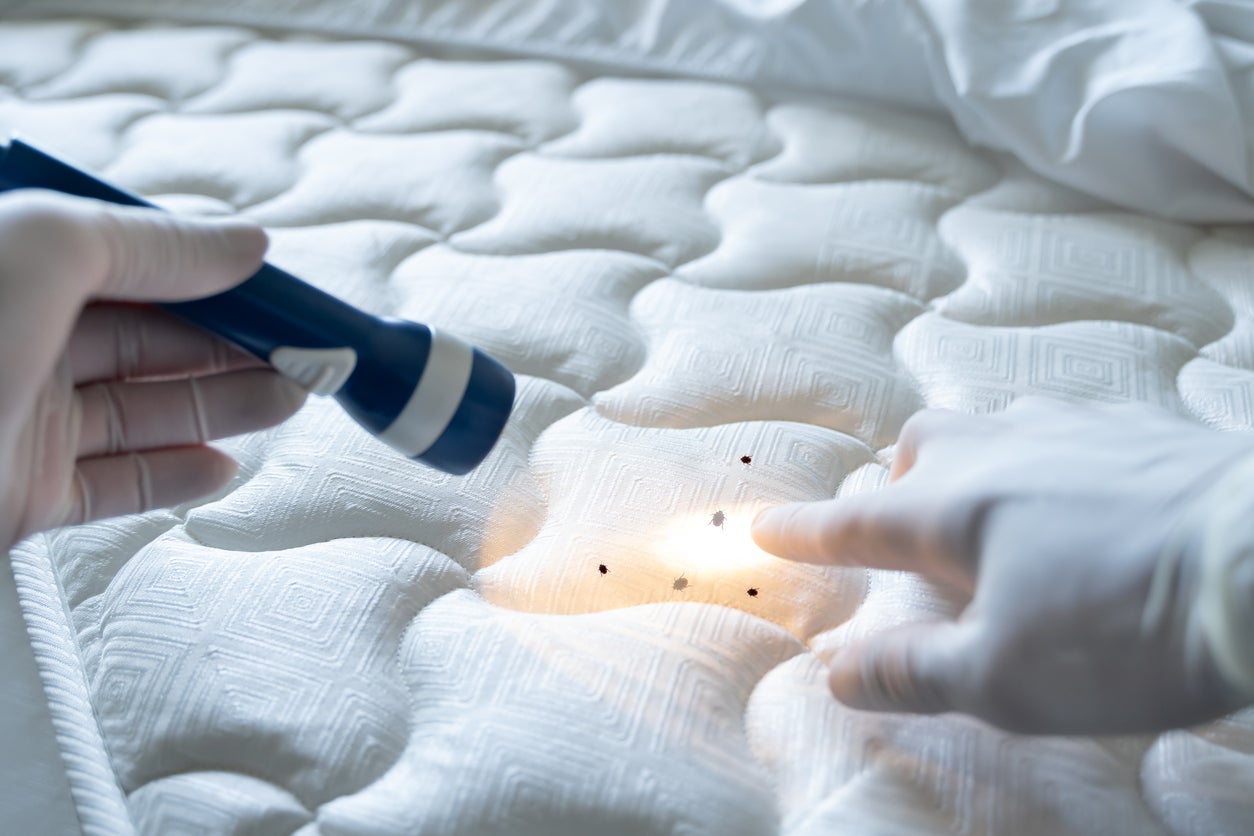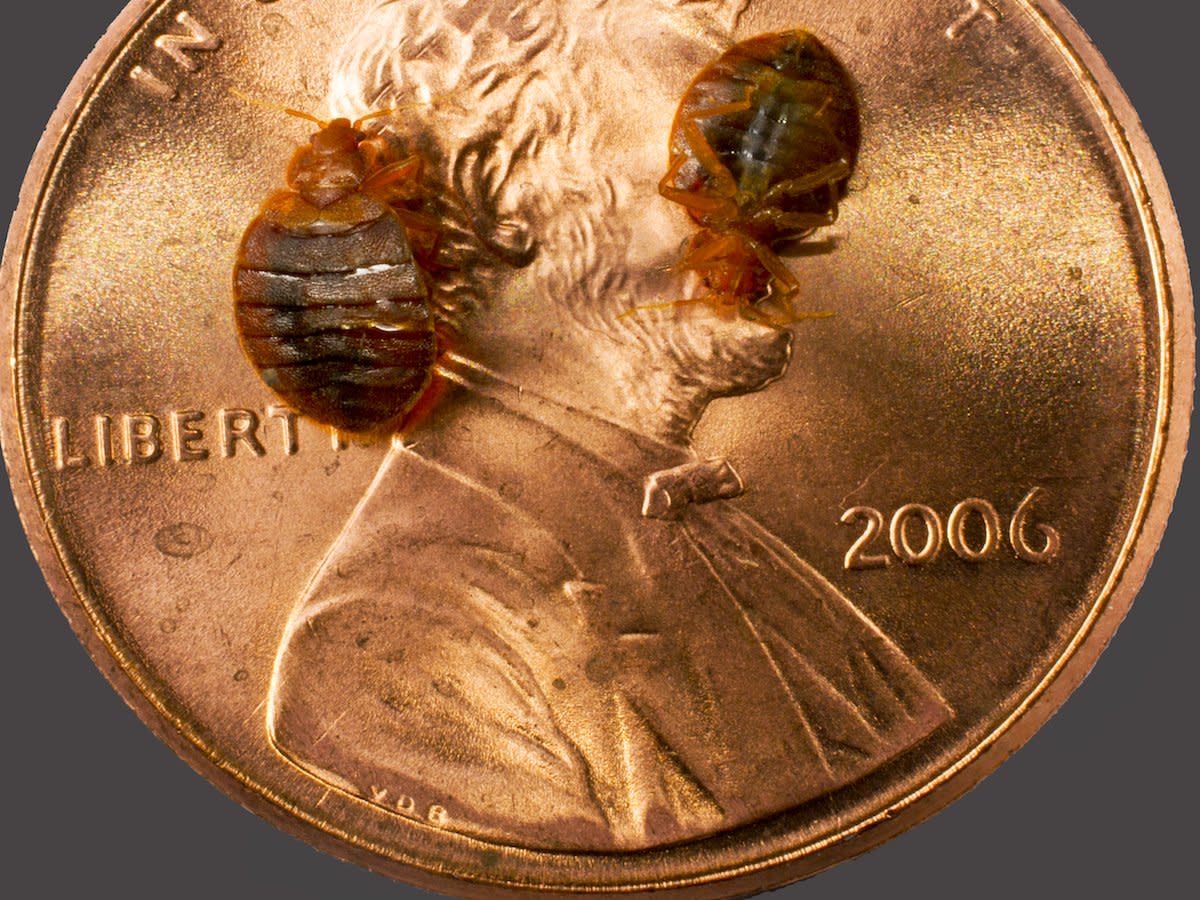To get rid of bed bugs without discarding your mattress, encase it in a bed bug-proof cover and steam clean the surface. Follow up with a thorough vacuuming and application of diatomaceous earth or a bed bug spray.
Dealing with a bed bug infestation can be a frustrating and daunting task. You may dread the thought of throwing away your mattress, as it’s a significant investment. But you’ll be pleased to know that there are effective methods to eliminate these pests without resorting to such extreme measures.
The key is to act quickly and to use a combination of strategies that target bed bugs at all stages of their life cycle. Sealing your mattress in a specially designed cover can trap and starve any lurking bed bugs. Steam cleaning can penetrate deep into the fabric, killing bed bugs and their eggs on contact.
By meticulously vacuuming the crevices and surfaces around your bed, you reduce their numbers and habitats. Applying natural or chemical agents responsibly can offer long-term protection, ensuring these unwelcome guests don’t make a comeback.
The Bed Bug Dilemma
The discomfort and stress caused by bed bugs can disrupt sleep and peace of mind. Discovering an infestation brings a dreaded choice: getting rid of your mattress or seeking other solutions. Throwing away your beloved mattress is not your only option. With the right approach, you can say goodbye to these pests while keeping your bed.
Identifying The Infestation
- Check for bites: Small, red marks on your skin when you wake.
- Look for signs: Tiny blood spots, dark fecal matter on sheets.
- Inspect crevices: Use a flashlight to search seams and tags.
Identifying an infestation early makes the elimination process smoother. Bed bugs are visible to the naked eye, so be vigilant.
Health Concerns And Myths
Bed bugs are often associated with numerous health risks and myths. Understanding the facts is crucial.
| Health Concerns | Common Myths |
|---|---|
|
|
Knowing the facts about bed bugs aids in effective treatment and prevention methods.

Credit: www.everydaycheapskate.com
Mattress Redemption
Waking up to bed bug bites can be a nightmare. Bed bugs don’t mean you must toss your mattress out. There’s hope for keeping your beloved sleep space. Let’s explore the possibility of mattress redemption.
Signs Your Mattress Can Be Saved
Not all mattresses with bed bugs need to be replaced. Look for these signs:
- No large stains or odors from bed bug excrement.
- Small numbers of bed bugs, mostly adults, can be easier to eliminate.
- No rips or tears in the mattress where bugs can hide.
- Mattress is still comfortable and supportive for sleep.
When To Consider Replacement
Some signs suggest replacing your mattress might be the best call:
| Replace if: | Keep if: |
|---|---|
| Infestation is severe | Infestation is mild |
| Tears and holes are visible | No tears or holes |
| Mattress has bad odors or stains | Mattress is clean and odor-free |
| Sleep quality is poor due to damage | Sleep quality is still good |
Begin With Basic Cleaning
Dealing with bed bugs starts with a thorough clean-up. Dirt and clutter give these pests places to hide. Removing this hiding places is critical. A systematic approach tackles bed bugs without tossing out a good mattress. Keep reading to learn step by step.
Stripping And Vacuuming
Start by stripping the bed. Remove all sheets, pillowcases, and any mattress covers. These items can harbor bed bugs. Use a stiff brush along the mattress seams. This helps dislodge any bugs or eggs. Next, arm yourself with a vacuum cleaner. Go over the entire surface of the mattress. Don’t forget the sides and the bed frame. Seal and dispose of the vacuum bag immediately after use. This prevents the spread of bed bugs.
- Strip the bed completely
- Brush mattress seams to remove bugs and eggs
- Vacuum mattress, including sides and crevices
- Dispose of the vacuum bag securely
Laundering Beddings And Clothing
After stripping the bed, wash all the linens. This includes sheets, pillowcases, blankets, and even curtains near the bed. Use hot water. The temperature should be at least 120°F (49°C). Follow with a spin in the dryer on the highest heat setting. This heat kills any remaining bugs or eggs. When done, store clean items in sealable plastic bags. This keeps them safe until the infestation is gone.
- Wash all linens in hot water (120°F or higher)
- Dry on the maximum heat setting
- Store in sealable bags
Natural And Chemical Treatments
Bed bugs can turn a restful night into a fitful nightmare. But before you think of disposing of your precious mattress, consider these effective treatments. They strike the perfect balance between natural approaches and scientifically-backed chemical solutions.
Utilizing Diatomaceous Earth
Diatomaceous earth (DE) is a powdery substance known for its ability to tackle bed bugs naturally. It is non-toxic and safe for home use, providing you with a chemical-free treatment option.
- Cover the edges of your mattress with DE.
- Create a barrier around your bed.
- Leave it for a few days to dehydrate the bed bugs.
After several days, vacuum up the DE along with the dead bed bugs.
Choosing The Right Insecticides
While natural treatments are great, sometimes stronger actions are necessary. Various insecticides can help you eliminate bed bugs efficiently.
| Insecticide Type | How to Use |
|---|---|
| Pyrethrins and Pyrethroids | These are spray-type insecticides. Apply them directly onto the affected areas. |
| Desiccants | Use them similar to DE for dehydrating and killing the bugs. |
| Neonicotinoids | They attack the bugs’ nervous system and should be used as per label instructions. |
When choosing insecticides, always follow the label. Proper application is key to effectiveness and safety.
Non-toxic Approaches
Combatting bed bugs can often seem like a battle you can’t win without heavy artillery. Yet, many non-toxic approaches exist for those wishing to maintain their mattress and keep their living space chemical-free. These methods leverage extreme temperatures to outsmart and eradicate bed bugs without causing harm to your home environment.
Heat Treatment Options
Bed bugs loathe heat. Temperatures above 120°F (49°C) will kill them, and thankfully, you can achieve this with items you may already own. Consider these heat applications:
- Steam Cleaning: A good quality steam cleaner reaches temperatures high enough to kill bed bugs on contact.
- Portable Heat Chambers: Enclose your mattress in a bag and use a heater specifically designed for pest control.
- Washing and Drying: Strip your bed and wash all linens on the highest heat setting, followed by at least 30 minutes in a hot dryer.
Cold Treatment Tactics
Cold treatments are less commonly used but can be effective when executed properly. Bed bugs cannot survive freezing temperatures for extended periods:
- Place items in zip-lock bags and store them in the freezer for at least four days.
- For larger items, set your home freezer to its coldest setting for maximum effect.

Credit: www.bobvila.com
Encasements And Barriers
Imagine sleeping peacefully without worrying about bed bugs. With encasements and barriers, you can keep your mattress and sleep bug-free. These protective measures act like a shield. They keep bugs out of your bed without the need to throw away your mattress.
Using Mattress Covers Effectively
Mattress covers, also known as encasements, trap bed bugs inside. This stops them from biting you. It also prevents new bugs from getting in. Use these tips for the best results:
- Choose the right size: Make sure the cover fits your mattress snugly.
- Look for quality: Pick covers made with strong materials that bed bugs can’t chew through.
- Seal it tight: A good zipper is essential to keep bugs trapped inside.
- Keep it on: Leave the cover on for at least a year. This ensures all bugs and their eggs die.
Intercepting Bugs With Barriers
Next, use barriers to stop bed bugs from climbing up. These are placed under bed legs and catch bugs. Follow these steps for barriers to work well:
- Install interceptors: These are cups that fit under each bed leg.
- Check regularly: Look at your interceptors often. This tells you if they’re working.
- Clean them: Empty the interceptors and wash them to keep them effective.
Mattress covers and barriers save your mattress and give you peace of mind. Fight bed bugs smart without losing sleep or your comfy mattress!
Ongoing Monitoring
Ongoing monitoring plays a crucial role in the fight against bed bug infestations. It ensures that any existing bed bugs are detected early on and new infestations are prevented. With careful attention to detail, you can protect your home without the need to discard your mattress.
Setting Up Bed Bug Traps
To catch bed bugs, install traps around your bed. These traps, also known as interceptors, should be placed under each leg of the bed. They create barriers between the floor and your bed. Look for these clues:
- Empty shells from molting
- Small black spots, which are bed bug excrement
- Live or dead bed bugs
Replace traps every few months or until no more bugs are caught.
Regular Inspections And Prevention Tips
Perform bed checks every two weeks. Use a flashlight to inspect seams and crevices. Follow these steps:
- Remove bedding and inspect all areas.
- Check behind headboards and in furniture joints. Eradicating bed Bugs from furniture is crucial for an infestation free home.
- Use a magnifying glass to spot tiny bugs or eggs.
Prevent future infestations with these habits:
- Wash bedding in hot water weekly.
- Vacuum your mattress and box springs regularly.
- Seal cracks and crevices around your bed frame.
- Keep clutter away from your bed to reduce hiding spots.

Credit: protectpestcontrol.sg
Seeking Professional Help
Bed bugs are a nuisance and getting rid of them may seem daunting. Sometimes, the situation calls for expert intervention. Professional bed bug control services offers a blend of experience and resources. They ensure the complete eradication of bed bugs without disposing of your beloved mattress. Let’s explore when it’s time to call the pros and what their process entails.
When To Hire An Exterminator?
The battle against bed bugs can be tough. Consider professional help if:
- DIY methods fail: After using sprays and powders, bed bugs may persist.
- Infestation spreads: These pests move beyond the bedroom, invading other spaces.
- Recurring problem: Bed bugs keep returning despite ongoing efforts to stop them.
- Health concerns: For those with allergies or sensitivities, pros handle pesticides better.
What To Expect During Professional Extermination?
A professional exterminator follows a strategic approach. Here’s what their process typically involves:
- Inspection: Expert checks your home, finding where bed bugs hide.
- Plan Creation: They design a tailored treatment for your specific infestation.
- Treatment: Pros use special chemicals and heat treatments to kill bed bugs at all life stages.
- Follow-Up: Multiple visits ensure bed bugs are truly gone.
Expect rooms to be vacated during treatment to ensure safety. Professional extermination might cost more upfront but saves your mattress and peace of mind.
Future Prevention Strategies
Bed bugs can be a persistent nuisance. After dealing with an infestation, it’s crucial to implement future prevention strategies to ensure these pests do not return. A proactive approach helps maintain a bed bug-free home, saving you time and stress in the long run.
Maintaining A Bed Bug-free Environment
Maintaining a bed bug-free environment requires consistent effort. Follow these simple yet effective steps to keep your mattress and living spaces safe:
- Vacuum regularly to remove any potential bed bug eggs or debris.
- Use protective mattress covers specifically designed to block bed bugs.
- Inspect second-hand furniture before bringing it into your home.
- Wash bedding on a high-temperature setting to kill any lingering bugs.
- Seal cracks in walls and floors to eliminate bed bug hiding places.
- Place bed bug traps around the bed’s legs to monitor for activity.
Educational Resources For Sustained Vigilance
Staying informed is key to preventing future bed bug infestations. Utilize these educational resources:
| Type | Description | Access |
|---|---|---|
| Guides | Step-by-step instructions for identifying and preventing bed bugs. | Online and in print. |
| Videos | Visual demonstrations on DIY prevention techniques. | Online platforms like YouTube. |
| Workshops | Expert-led sessions on managing and preventing bed bugs. | Community centers and educational institutions. |
| Hotlines | Immediate advice and support from pest control professionals. | Telephone-based services. |
Combine vigilance with these practical measures and resources to create a long-term, bed bug-resistant environment. Doing so will minimize the risk of a re-infestation and provide peace of mind knowing your home remains a clean and safe haven.
Frequently Asked Questions For How To Get Rid Of Bed Bugs Without Throwing Away Mattress?
Can Heat Treatments Eliminate Bed Bugs?
Heat treatments are an effective method to kill bed bugs. Exposing them to temperatures over 120°F (49°C) for several hours can eradicate the infestation. Professional exterminators typically use this method with specialized equipment to ensure the heat penetrates all areas of the mattress.
What Home Remedies Work Against Bed Bugs?
Diatomaceous earth and baking soda are popular home remedies. When applied to affected areas, they dehydrate and kill bed bugs over time. Regular vacuuming and washing bedding in hot water also help. However, these remedies may not completely eliminate all bed bugs.
Are Mattress Encasements Effective For Bed Bugs?
Yes, mattress encasements are effective in trapping bed bugs inside and preventing new ones from entering. Choose a bed-bug-proof encasement designed for this purpose. Encasements should stay on for at least a year to ensure all bugs and eggs within have died.
How Often Should I Inspect My Bed For Bed Bugs?
Conduct regular inspections every two weeks if you suspect bed bugs. Look for live bugs, excrement, or shell casings. In high-risk areas, such as apartments or dormitories, monthly inspections are a good preventive measure to catch infestations early.
Conclusion
Banishing bed bugs can be daunting, yet it’s achievable without discarding your mattress. By consistently applying heat treatments, using diatomaceous earth, and introducing mattress encasements, you create an inhospitable environment for these pests. Remember, persistence and thoroughness are key. Equip yourself with these tactics, and reclaim the comfort of your bug-free bed sanctuary.

I’m MD Tanvir, and I bring years of expertise gained from working closely with pest control companies to the forefront. My journey in the industry has inspired me to launch Bug Battler, a platform aimed at equipping people with the know-how to combat pests autonomously. Through Bug Battler, I aim to empower individuals with practical insights to tackle pest infestations effectively.

